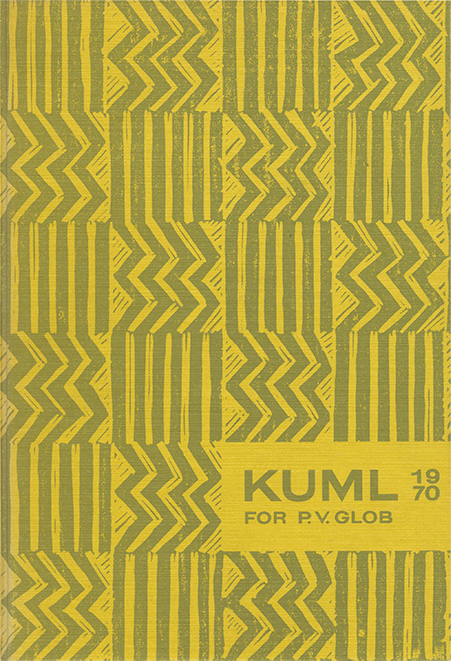Harald Blåtands runesten i Jelling. Epigrafi, kronologi og historie
DOI:
https://doi.org/10.7146/kuml.v21i21.105512Nøgleord:
Harold Bluetooth, Harald Blåtand, Jelling, runestone, runesten, Chronology, history, epigraphy, epigrafikResumé
Harold Bluetooth's runestone at Jelling. Epigraphy, chronology and history
In 1852, the antiquarian C. C. Rafn, whose runological research did not meet with much success, aired one of his tenuous theories on the inscription on the second Jelling stone, which Harold Bluetooth erected to his father and mother - »King Gorm and his wife Thyra«, as they are called on the first Jelling stone. The theory was that the inscription had been carried out in two stages: the rune-master, when he ran out of room »for what he had intended to express«, broke off in the middle of a sentence; the completion was supplied at a later date, even perhaps by Sven Estridsen! Independently of Rafn and in a somewhat modified form, Sune Lindqvist offered a similar solution (1931, 1952), which was supported by Hans Christiansson (1953 and 1969) and was (1969) revived by Aksel E. Christensen and P. V. Glob, independently of each other.
It was suggested that Harold erected the runestone and the empty southern mound shortly after the death of Gorm (which occurred about 950), but that he furnished the stone only with the ornaments and the memorial inscription to his parents, being that part of the inscription occupying the top three lines on face A, minus the last word (s a) in line 3 (fig. 2). Towards the end of Harold's reign or perhaps after his death (at the latest 987), the rest of the inscription, dealing with his three exploits, was added: »He won for himself all Denmark and Norway and made the Danes Christian«. The following arguments in favour of this theory have been advanced:
The memorial inscription is placed between bands, which are also an integral part of the ornament framing the inscription, whereas the »addition« makes do with lines. This is unattractive, it is claimed.
The two parts of the inscription - the memorial inscription and the mention of Harold's exploits (said to be self-glorification) - are discordant.
Word separation employs two dots in the memorial inscription and one (with one or two exceptions) in the »addition«.
»Added« ornament is described as poor workmanship and the runes in the last lines are called unsteady and clumsy.
At the bottom of face C, the side bearing the figure of Christ, (and extending some way onto face A, there is an »empty«, unused line (fig. 3 and 9).
The author rejects the aesthetic arguments as being subjective, irrelevant and inconclusive. He draws attention to the system employed, which demands bands between ornaments and runes, and between lines of runes, but single lines towards the ground. If the three-lined memorial inscription should originally be the only one on face A, it is remarkable that the top line is skew and narrower than those below and that it is forced into a part of the stone traversed by a big crack; this crack explains why the last runes of the first line are considerably smaller than the first ones.
To call the mention of Harold's three feats »self-glorification« is to apply a modem attitude to past circumstances. Other examples of »self-glorification« are given. The importance of the person erecting the stone reflects on the person commemorated -the greater the former, the greater the honour conferred on the latter.
The variation in the separative signs cannot be employed as evidence of another or later engraver. The first Jelling stone too varies in this manner.
The ornament said to be a crudely executed and uncompleted relief band is on the contrary a complete and finished device linking the ornament on face A with that on face C (see fig. 3b-a), corresponding to the device linking faces B and C. There is not a single unsteady and clumsy rune in the whole inscription. The runes have everywhere the same character and forms. What has been taken for poor workmanship is in fact the weathering which has deformed several of the runes, especially in the lines under the beast and the Christ (cf. fig. 1).
Fig. 9 shows that the wavy course of the last rune line is determined by the ornamental rope moulding above it.
The »empty« line at the bottom of fig. 9 is neither accidental nor unused. It is a levelling line provided by the rune-master to show how the stone should be placed (so that the Christ figure be upright) and how deep.
The theory of discontinuity in the inscription thus rests on subjective views, on inadequate examination of the runes and ornament, and finally on misunderstandings.
The Jelling stone must have been erected as soon after the death of Gorm as was seemly, for it commemorates Harold's parents. Ornamentally and runologically it can be dated only to the 10th century. It is the events recorded on the stone which must date the monument. We do not know, however, what is referred to with the words »won for himself all Denmark«. Neither do we know when Harold conquered Norway or when he received baptism. The conversion of the Danes to Christianity can, however, according to the sources be assigned to the 960s, and it is around this time that the stone (and barrow) must have been erected. There is good reason to believe that the conversion, which is the last mentioned of Harold's three exploits, was also chronologically the last event: Harold could hardly conquer Norway before he had won Denmark, and he could hardly convert the Danes before he had won the country.
Erik MoltkeDownloads
Publiceret
Citation/Eksport
Nummer
Sektion
Licens
Fra og med årgang 2022 er artikler udgivet i Kuml med en licens fra Creative Commons (CC BY-NC-SA 4.0).
Alle tidligere årgange af tidsskriftet er ikke udgivet med en licens fra Creative Commons.


